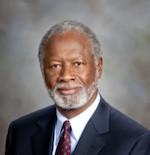Pictured is the Thomas J. Moyer Ohio Judicial Center where the Ohio Supreme Court meets. Photo courtesy Wikimedia Commons.
A contempt hearing for the Ohio Redistricting Commission has been pulled down as Ohio Supreme Court justices review a new set of maps, but a dissent in the hearing put justices at odds over chief justice powers.
On Feb. 24, an order signed by Chief Justice Maureen O’Connor was released by the court ordering that all members of the Ohio Redistricting Commission appear in person before the court. The order asked for the commission to appear on March 1, but on Friday the court continued the hearing for an as-yet unknown date.
The order mentions the previous court order for the ORC to file a new General Assembly map by Feb. 17, and a subsequent order for the commission members to explain why they shouldn’t be held in contempt for failing to do so.
The commission adopted a new legislative redistricting plan on Thursday, exactly a week after the deadline had passed. Plaintiffs in the case were given until 9 a.m. Monday to file objections to the new maps.
The order was only signed by O’Connor, and a spokesperson for the court said because it’s an “administrative matter” – that is, one involving scheduling rather than one making a ruling in a case – it’s under the chief justice’s purview alone.
“It’s it’s substantive, they vote on it; if it’s an administrative matter, that’s her job,” spokesperson Lyn Tolan told the OCJ.
Justices Sharon Kennedy and Patrick Fischer both issued statements with the court that they disagreed with the decision to call the ORC to court, with Kennedy filing a full dissent along with her statement.
Kennedy, a candidate for chief justice in the next election as O’Connor’s term expires and she is barred by age from seeking another term, denied that a vote happened and called out O’Connor for making a unilateral decision.
“The chief justice, acting alone, does not have the authority to reject the answers filed by respondents, the Ohio Redistricting Commission and the commission members, to the show-cause orders in these cases and order the commission members to appear in person,” Kennedy wrote in a dissent filed Friday.
The main reason for her dissent, according to Kennedy, was the lack of approval by at least four members of the court. She cited the Ohio Constitution’s provision on the organization of the Supreme Court that states “a majority of the Supreme Court shall be necessary to constitute a quorum or to render a judgment.”
“Nothing in the Ohio Constitution grants the chief justice of this court authority to rule on motions on behalf of the full court,” Kennedy wrote.
Though Kennedy disagreed with the way the order came about, she did acknowledge in her dissent that the court has “delegated authority to the chief justice to issue administrative orders in certain instances,” such as attorney disciplinary cases.
Fischer, who is seeking reelection to the court, did not file a full argument like Kennedy’s, just a statement marking his dissent.
One situation in which the chief justice does have primary authority is in assigning a visiting judge, as she had to do after Justice Patrick DeWine recused himself from Tuesday’s contempt hearing. It is not clear why he only recused himself from the contempt aspect of the redistricting litigation and not the litigation as a whole.
The Ohio Constitution, along with the Ohio Revised Code and rules for Ohio courts names the chief justice as the one with the authority to temporarily assign judges to serve in Ohio courts.
O’Connor assigned W. Scott Gwin of the Fifth District Court of Appeals to sit in for DeWine for the hearing. Gwin, it has been mentioned, is a Democrat, but party affiliation is not one of the factors the chief justice must consider in assigning a judge.
The state supreme court’s guidelines for assigning judges tells the chief justice to consider the proximity of the judge to the court, the status of the judge’s current docket and their competence “for the prospective duties.”
Gwin has experiencing sitting on the Ohio Supreme Court as a visiting judge. In 2018, he heard oral arguments in the school funding case of the now-defunct Electronic Classroom of Tomorrow. He sat in for former Justice Judith French when she recused herself.
Only a court of appeals judge can be assigned to serve on the supreme court.
Assignment of a judge to sit in for a justice can happen for a number of reasons, including scheduling conflicts and recusals.
• • •• • •
This story is provided by Ohio Capital Journal, a part of States Newsroom, a national 501 (c)(3) nonprofit. See the original story here.












